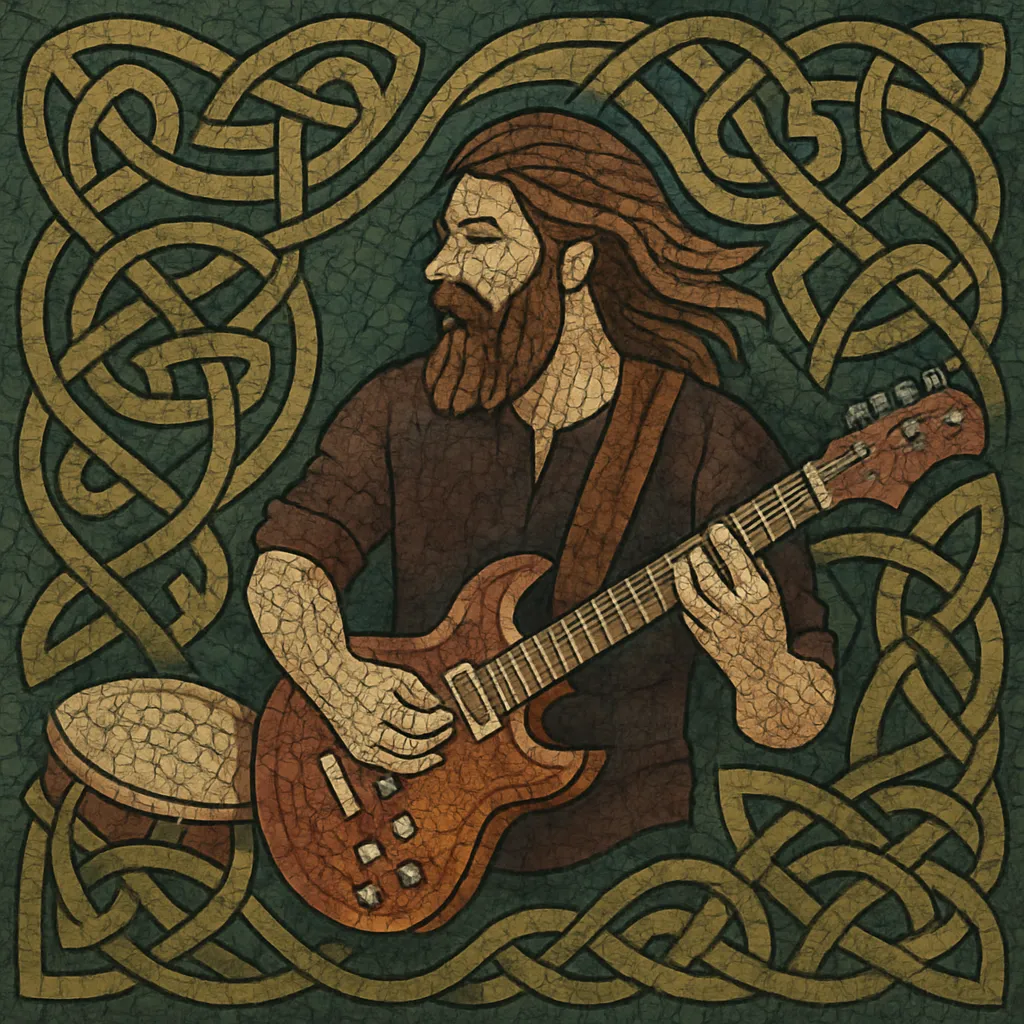Celtic rock blends the energy and instrumentation of rock with the melodic modes, dance rhythms, and timbres of Celtic traditions from Ireland, Scotland, and Brittany. Electric guitars, bass, and drum kit sit alongside fiddles, tin whistles, uilleann pipes, bouzouki, and bagpipes, creating anthemic songs and tune sets that feel both ancient and modern.
Emerging in the early 1970s, the style offered a contemporary vehicle for Celtic languages and storytelling, while keeping jigs, reels, and airs alive on amplified stages. Over time it grew into a festival-ready sound that influenced punk, metal, and various pop crossovers, and became a musical emblem of Celtic identity at home and in the diaspora.
Celtic rock took shape at the turn of the 1970s as musicians fused the backbeat and amplification of rock with traditional Celtic tunes and song forms. In Ireland, Horslips electrified reels and jigs and set mythic tales to rock arrangements, while in Brittany, harper Alan Stivell brought Breton melodies and instruments into a modern, amplified context. These innovators drew on the momentum of British folk rock while foregrounding distinctly Celtic repertoires, languages, and instruments.
Through the mid‑to‑late 1970s and into the 1980s, bands refined the idiom: Runrig crafted arena‑scale anthems in Scottish Gaelic; Thin Lizzy’s hit takes on Irish material (e.g., “Whiskey in the Jar”) signaled mainstream potential; and Big Country used guitar textures to evoke bagpipes. The period cemented the style’s signatures—rock rhythm sections supporting modal melodies, with fiddle, pipes, or whistle taking lead lines.
The Waterboys’ “Fisherman’s Blues” era popularized a rootsier, tune‑driven side of Celtic rock. In Scotland, Capercaillie and Wolfstone pushed a polished yet vigorous approach, while in North America, Spirit of the West and Seven Nations connected the sound to diaspora communities and festivals. Parallel scenes leaned punkward (feeding into Celtic punk) and into heavier guitar tones that later influenced folk metal.
Celtic rock remains a staple of folk and world festivals, St. Patrick’s Day circuits, and large outdoor stages. Modern acts often integrate contemporary production (delay‑soaked guitars, punchy low end, and tight click‑ready arrangements) while preserving dance‑tune sets and traditional ornamentation. Its legacy is clear in Celtic punk, folk metal with Celtic flavors, and electronic hybrids that sample or feature Celtic instrumentation.


